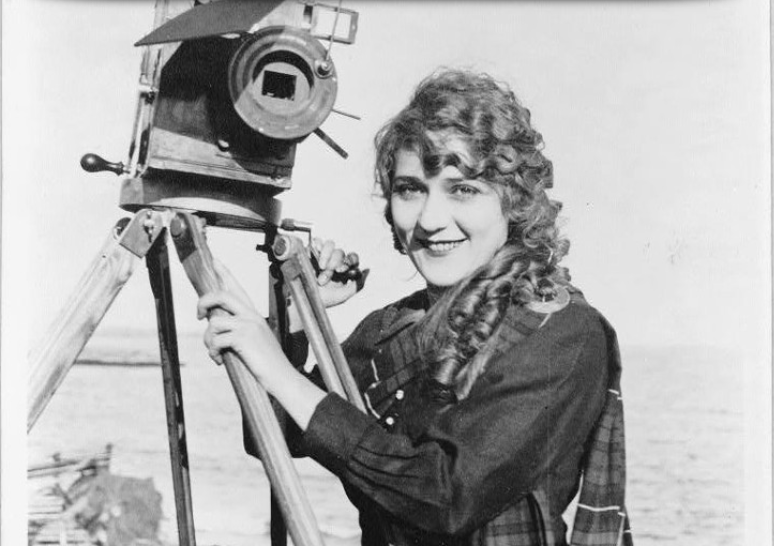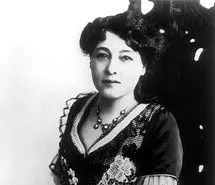
Hollywood: Her Story

Audio By Carbonatix
While women have been involved in all aspects of the movie business from the beginning, and scrambling for gender parity for more than a century, film historians long ago pointed their spotlights on the triumphs of men, and thousands of women’s stories disappeared. Few know that women played a major role in the United States’ film industry in the 1910s; in part, that’s because once the movie industry proved itself to be big business in the mid-’20s, massive studios formed in Hollywood and shut down independent production houses – many owned by women. Crafts like cinematography began to be passed down, father to son, and the eventual formation of male-only unions blocked women from certain trades altogether.
Now Colorado authors Jill S. Tietjen and Barbara Bridges are resurrecting the real story of women’s contributions to film. Their new coffee table tome, Hollywood: Her Story – An Illustrated History of Women and the Movies, surveys the vast accomplishments women have made since the late 1800s. It’s a chronological celebration of actresses, screenwriters, editors, directors, producers and more – from French filmmakers Alice Guy-Blaché, who in 1896 became the first woman to direct a film, to Agnès Varda, who questioned the entire enterprise of discussing “women filmmakers.” “Do you ask a man who doesn’t have hair if he considers himself a bald filmmaker?” Varda asked. “He’s a man with no hair, and he’s a filmmaker.”

Barbara Bridges and Jill Tietjen.
Courtesy of Jill Tietjen
All of the women profiled in the book have ties to Hollywood; their identities span races, nationalities and sexual orientations. Some are known, others largely forgotten.
When news happens, Westword is there —
Your support strengthens our coverage.
We’re aiming to raise $50,000 by December 31, so we can continue covering what matters most to this community. If Westword matters to you, please take action and contribute today, so when news happens, our reporters can be there.
Tietjen and Bridges began working on their book over breakfast a few years back. Tietjen, an electrical engineer, had just penned her first volume in the Her Story series: Her Story: A Timeline of the Women Who Changed America. She started talking with Bridges about what subject to take on next. Tietjen had a long list of ideas: women in the food industry, women in the magic industry, women of Africa, and on and on. Bridges, an entrepreneur who founded Women + Film, which went on to become an annual festival and regular screening series with the Denver Film Society, persuaded Tietjen that a survey of women in Hollywood should be next. And ultimately, the two agreed to write the book together.
They set out to research women who worked in all areas of the industry for over 120 years. The authors would tell these women’s stories in snippets, rich with quotes, and include as many pictures as possible, assuming they could get the rights.
Along the way, they unearthed the memory of forgotten creatives like camera operator Margery Ordway, animator Helena Smith Dayton and screenwriter June Mathis, who all played a part in shaping what Hollywood would become. The authors also explored the lives of more famous women like Mary Pickford, the first actor – male or female – to become a millionaire, and Lillian Gish, the “First Lady of the Silent Screen Era,” who spent 75 years in the industry: acting, directing and eventually writing about the history of film. They explored the careers of Anne Bauchens, who worked with Cecil B. DeMille for forty years, and Thelma Schoonmaker, who has collaborated with Martin Scorsese for more than fifty. Ultimately, the book chronicled more than 1,200 women’s stories.
Hollywood: Her Story – which was written as the #metoo movement made headlines, challenging the culture of sexual harassment and discrimination in Hollywood – is decidedly upbeat. It’s not a comprehensive look at social and political issues facing women in the business, and it largely glosses over the obstacles that blocked their way. Instead, the book is a testament to their achievements.

Alice Guy-Blach
Hollywood: Her Story
While similar efforts to unearth the buried histories of women have been framed as revisionist, Tietjen and Bridges insist they’re just getting the story right.
“What we’re doing is restoring some missing pieces,” says Tietjen. “That’s the stories of the half of humanity that don’t appear in history books worldwide. What Barbara and I are doing in this book is not revising history. We’re restoring history. We’re helping complete history. These stories aren’t told. This information isn’t captured in the regular history books.”
In 2019, the authors say, this book is more urgent than ever, as the quest for gender parity in the industry is ongoing. “Women still aren’t getting their movies funded,” says Tietjen. “There are still other issues. In 2018, that was the year that the first woman was nominated as Best Cinematographer. Until we can see a little more gender equity in the nominations in film – more directors and more producers and more speaking roles – we’re not there.”
For Tietjen and Bridges, getting there involves resurrecting the memories of women who’ve already done great things, even if they weren’t recognized with awards.
“I think there are people even involved in moviemaking that don’t know the history of women and film,” says Bridges. “It’s time now – and always has been – to write those stories into our history.”
Learn more about Hollywood: Her Story at hollywoodherstory.com.